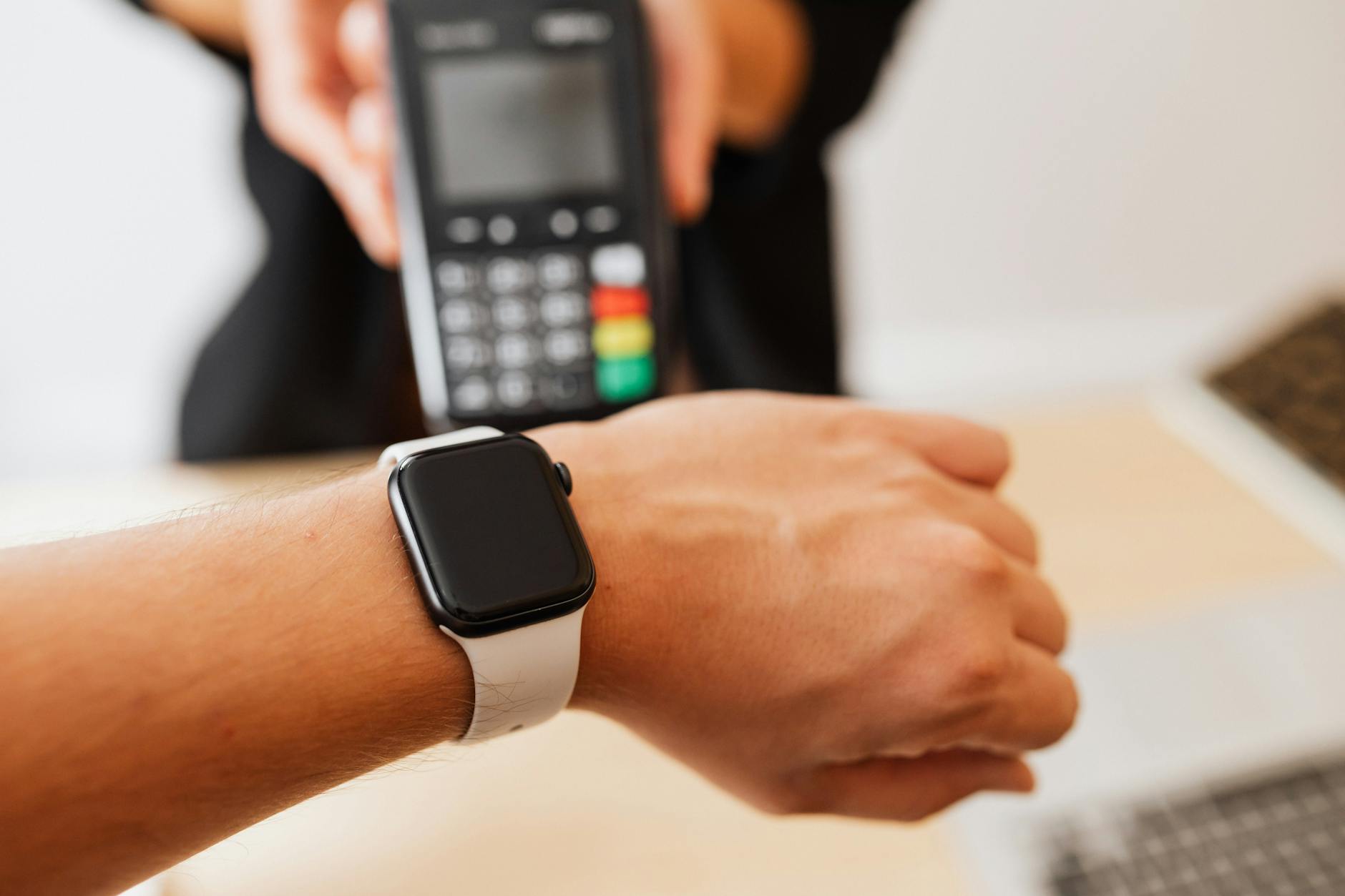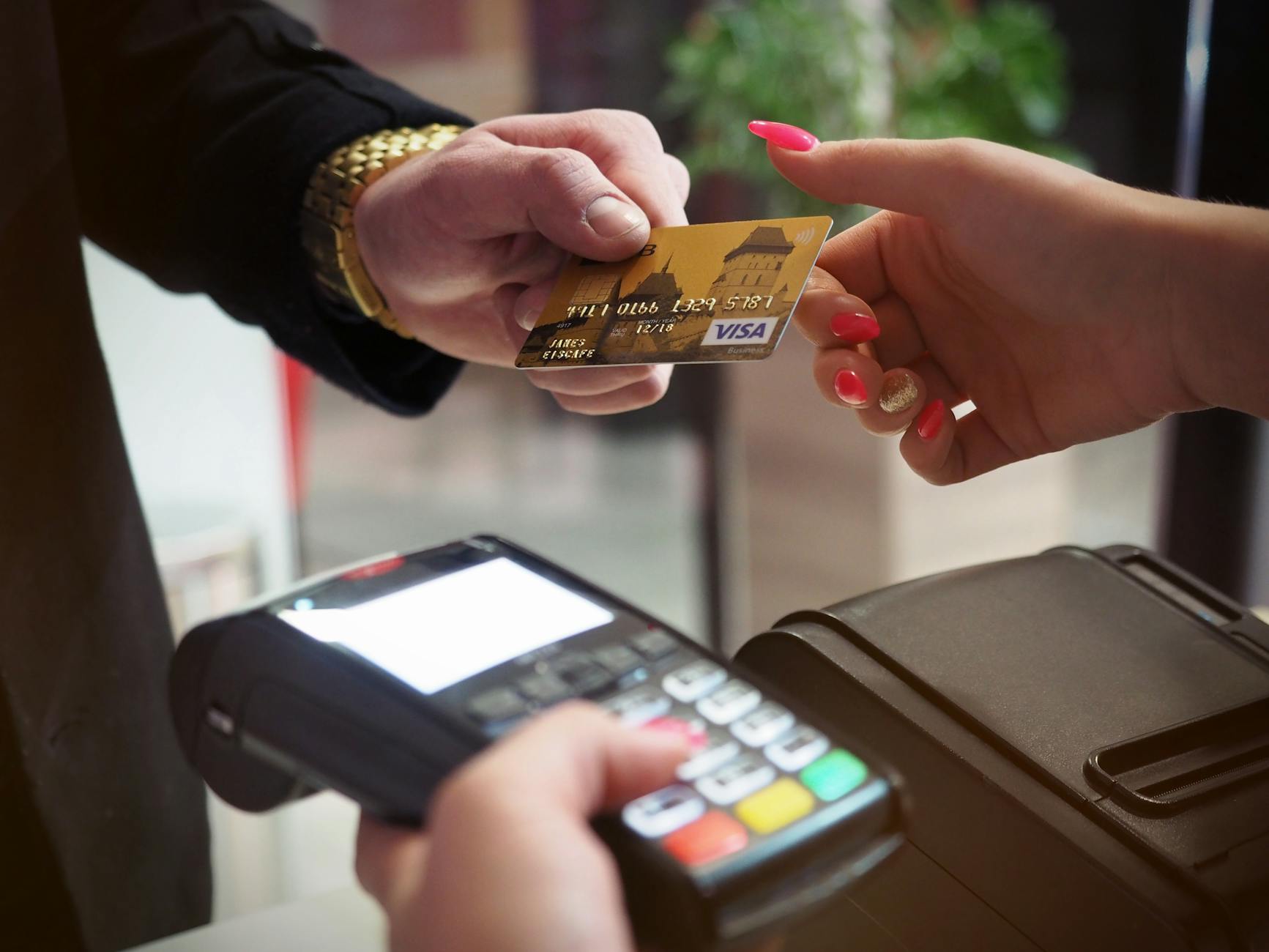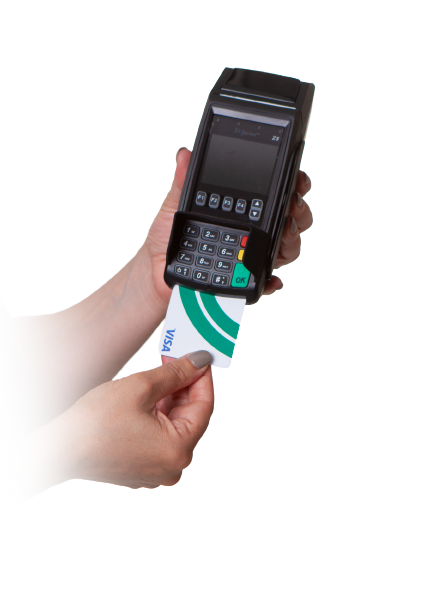Mobile POS System: Small businesses are embracing mobile POS systems more than ever in 2025, and it’s easy to see why. These systems go beyond traditional cash registers, offering faster processing, contactless payments, and flexibility to meet the needs of today’s customers. Whether it’s accepting payments from anywhere or integrating with loyalty programs and inventory tools, mobile POS solutions are giving small businesses the edge they need to stay competitive. If you’re ready to explore how this technology is reshaping payment options, you’re in the right place.
The Growth of Mobile POS System in Small Businesses
Mobile POS (Point of Sale) systems have been a driving force in the evolution of how small businesses handle transactions. Staying ahead of consumer expectations and integrating cost-effective solutions is no longer optional—it’s essential. In 2025, businesses continue shifting to mobile POS systems for their ability to deliver flexibility, real-time data access, and enhanced customer experiences. Below, we’ll explore the main drivers behind this rapid adoption and the industries benefiting the most.
Key Factors Driving Adoption
Several standout factors are encouraging small businesses to adopt mobile POS systems. Let’s take a closer look at why these systems are becoming critical tools for growth:
- Affordability: Traditional POS setups often come with a hefty price tag, typically requiring expensive proprietary hardware and hidden maintenance fees. Mobile POS systems break that mold. Many solutions, like Square or Shopify POS, offer free or low-cost hardware with flexible payment-based pricing, making them an ideal choice for budget-conscious small business owners.
- Ease of Setup: Setting up a mobile POS system is as simple as downloading an app and plugging in necessary peripherals, such as a card reader. No advanced tech skills? No problem. These systems are designed to be user-friendly for owners and employees alike.
- Seamless Integration with Mobile Technology: Mobile POS systems capitalize on the everyday devices you already use. Whether it’s syncing with your smartphone, tablet, or smartwatch, their portability ensures businesses can process payments anywhere—be it at the counter, a farmer’s market, or during delivery.
- Versatile Payment Options: Today’s consumers want options, whether it’s a tap-to-pay card, digital wallet (like Apple Pay), or a good old-fashioned chip card. Mobile POS systems are built to handle it all, ensuring businesses cater to every customer preference.
This combination of affordability, simplicity, and adaptability is why 2025 is shaping up to be a year where more businesses than ever ditch traditional systems in favor of mobile-first solutions.

Industries Benefiting the Most
While mobile POS systems offer broad benefits, certain industries are experiencing transformative advantages. These tools are changing how businesses operate in fast-moving, customer-facing environments. Here’s where they’ve become indispensable:
Retail
Small retailers were among the first to adopt mobile POS technology, and it’s easy to see why. Real-time inventory tracking, streamlined checkout experiences, and integration with e-commerce platforms make these systems a must-have. Whether managing a boutique clothing store or a local artisan shop, the ability to unify online and in-person sales is a game-changer.
Food Services
From food trucks to full-service restaurants, the hospitality industry sees significant value in mobile POS platforms. Systems like Toast and Clover allow waitstaff to take orders directly at the table or curbside, reducing errors and speeding up kitchen-prep times. For food trucks or pop-up bakeries, devices like Square ensure quick and easy payments so lines move efficiently.
Events and Pop-Up Shops
Event vendors and pop-up shop owners love mobile POS systems for their portability and ability to process transactions on the go. Whether selling handcrafted jewelry at a farmer’s market or custom artwork at an expo, mobile POS keeps operations running smoothly without requiring a permanent setup.
Across these sectors, mobile POS systems don’t just save time—they give small businesses a competitive edge by combining convenience with powerful backend tools like data analytics, real-time sales tracking, and customer engagement tools. Think about it: If your technology simplifies the customer experience while offering you actionable insights, doesn’t it make for a team player you can’t live without?
Emerging Payment Technologies in 2025 Like Mobile POS System
Payment technologies are advancing rapidly, shaping how businesses manage transactions and connect with customers. In 2025, mobile POS systems are integrating innovative features to provide faster, more secure, and efficient transaction methods. Small businesses now have access to tools that were once exclusive to large enterprises, leveling the playing field and enhancing customer experiences.
Let’s examine how these emerging technologies are redefining the mobile POS landscape.
Contactless Payment Options
Contactless payments are no longer a novelty—they’re expected by customers. Small businesses are adopting payment methods like NFC (Near Field Communication), biometric authentication, and QR codes to meet these expectations.
- NFC-Enabled Payments: Think of NFC as the handshake between devices, enabling transactions with just a tap of your smartphone or smartwatch. Services like Apple Pay, Google Pay, and Samsung Pay are widely accepted, allowing businesses to offer a seamless and fast checkout experience. With NFC technology built into mobile POS systems, transactions are secure, encrypted, and as quick as blinking an eye.

- Biometric Payments: Fingerprints, facial recognition, and even voice authentication are now being used to confirm transactions. These methods remove the need for PINs or passwords, offering customers a faster and more secure option at checkout.
- QR Codes: QR codes are still thriving, especially in quick-service environments like cafes and food trucks. Customers can simply scan the code with their smartphone to pay instantly. What makes QR codes exceptional is their versatility—they don’t require sophisticated hardware, making them perfect for small businesses looking to keep costs low.
These contactless options not only enhance convenience but reinforce customer trust by making payment processes swift and safe.
Integration of AI and Predictive Analytics
AI is rapidly becoming indispensable in modern mobile POS systems. Beyond simplifying transactions, it empowers businesses to understand their customers and stay ahead of trends.
- Real-Time Data Insights: Mobile POS systems now rely on AI for on-the-spot analytics. Imagine being able to see which products are flying off the shelves or which times of day bring in the most foot traffic. These insights enable businesses to make smarter, faster decisions.
- Predictive Analytics: Thinking ahead is no longer a guessing game. AI-driven predictive tools help businesses anticipate demand, recommending when to reorder inventory or schedule staff. These systems analyze past data to forecast sales patterns, reducing costs and preventing stockouts.
- Personalized Customer Experiences: AI algorithms can analyze customer purchasing trends and suggest specific promotions or products based on individual behavior. For example, offering loyalty rewards to repeat customers or upselling complementary items becomes much easier when your system is this intuitive.
This fusion of AI and POS technology turns small businesses into data-driven powerhouses, ensuring they not only meet customer expectations but exceed them. Isn’t it compelling to know your payment system is also your business coach?
By embracing these technologies, mobile POS systems are empowering small businesses with tools that are efficient, reliable, and scalable—ensuring they thrive in an evolving world of commerce.
Seamless Omnichannel Experiences
Today’s customers expect businesses to meet them wherever they are—online, in-store, or on the go. For small businesses, delivering a seamless omnichannel experience is no longer a luxury; it’s a necessity. Mobile POS systems provide the tools to unify sales channels, making it easier than ever to blend physical and digital touchpoints. Let’s break down the undeniable benefits this brings to businesses and explore real-world success stories that demonstrate the power of omnichannel integration in action.
Benefits for Retailers and Service Providers
When your systems are speaking the same language across all channels, everything just works better. Mobile POS systems make it possible to integrate inventory, sales, and customer data into one cohesive experience. Here are the benefits that matter most:
- Synced Inventory Management: Picture this—customers browsing your online store see exactly what’s available in real time. Whether you sell a product in-store or through your website, your inventory updates instantly across all platforms. This eliminates overselling and ensures smoother restocking. For businesses offering “Buy Online, Pick Up In-Store (BOPIS),” this feature is invaluable.
- Unified Customer Data: Mobile POS systems collect and store customer purchase history from all channels. This empowers you with insights to provide personalized recommendations, loyalty rewards, and targeted promotions. For example, if a customer makes their first purchase online, they can still redeem loyalty points in-store during their next visit—effortlessly.
- Streamlined Checkout Process: Think of it like rolling out the red carpet for your customers. Shoppers can browse online, pick up in-store, or even return products at any location hassle-free. With features like QR-code returns and mobile payments, customers enjoy flexibility and speed, improving their overall experience. For service providers, this means fewer hiccups while onboarding or managing clientele.
Omnichannel systems aren’t just about convenience—they’re about operational efficiency and building long-term customer relationships. When businesses simplify the buying journey, they often see higher satisfaction and repeat business.
Examples of Effective Implementations
Small businesses across industries are already capitalizing on the power of omnichannel solutions powered by mobile POS systems. Let’s take a look at a few standout examples:
A Local Boutique with Big Goals
Imagine a small clothing boutique looking to compete with larger retailers by adopting Shopify POS. They sync their in-store inventory with their e-commerce site, creating a single source of truth for all sales. With omnichannel tools in place, shoppers can find what they’re looking for online, reserve it for try-on in-store, and make their purchase seamlessly. It’s this kind of frictionless experience that not only boosts sales but also brings in foot traffic.

Pop-Up Shops That Shine
Pop-up events like farmer’s markets and trade shows demand flexibility. A handcrafted jewelry business using Square POS ensures every sale is automatically integrated into their full sales platform. Whether it’s a jewelry piece sold at an event or through an Instagram store, their inventory and customer data stay accurate. This is especially key for small businesses that can’t afford to lose track of inventory during busy seasons.
Restaurants Using Unified Technology
In the hospitality sector, customers expect omnichannel convenience. A growing fast-casual chain integrates Toast POS with online ordering functionality. Customers can order ahead online, pick up their meals in-store, or dine in—whichever fits their schedule. Operationally, this means fewer line bottlenecks, happier diners, and boosted kitchen efficiency.
These examples show how mobile POS systems deliver incredible value by helping small businesses scale modern customer expectations into their everyday operations. From local retailers to food vendors, businesses can thrive by embracing technology that unifies processes and eliminates barriers between channels.
Business Insights and Analytics with Mobile POS System
In 2025, mobile POS (Point of Sale) systems are more than just tools for processing transactions—they are powerful analytics engines helping businesses make smarter, data-driven decisions. For small businesses, these systems deliver real-time insights that can revolutionize how they manage inventory, optimize staffing, and navigate shifts in customer behavior. Here’s how mobile POS systems are transforming everyday operations.
Inventory and Staffing Optimization
Managing inventory and staffing levels is often a balancing act for small businesses. Too much inventory ties up resources, while too little risks losing sales. Similarly, overstaffing drains profits, but understaffing can hurt customer experiences. Mobile POS systems simplify this equation, allowing you to make sense of complex operational needs through actionable data.
- Real-Time Inventory Tracking: Mobile POS systems provide an always-up-to-date look at inventory levels. For example, cloud-based platforms like Square or Clover sync inventory across all your sales channels—whether in-store, online, or on-the-go. If a product is selling out quickly, you’ll know immediately, allowing you to reorder before you run out.
- Spotting Best-Sellers Quickly: By analyzing sales patterns, these systems highlight your most popular items so you can prioritize reordering or promotion. Why spend money showcasing slow movers when the data already shows what customers want?
- Staff Scheduling Made Easy: With insights into busy hours and peak sales times, mobile POS systems can help businesses align staffing with demand. If weekends see higher foot traffic, you can schedule additional employees, reducing wait times and improving customer satisfaction.
The analytics do the heavy lifting, enabling small businesses to streamline operations, reduce waste, and stay ahead of customer expectations without juggling spreadsheets.

Revenue and Customer Trends Analysis
Understanding your customers and what drives your revenue is essential for growth. Mobile POS systems give businesses a competitive edge by offering comprehensive insights into sales trends and consumer behavior. It’s like having a business coach that works in real time.
- Tracking Revenue Trends: These systems break down revenues by time of day, day of week, or season, helping you pinpoint the most profitable periods. For example, a bakery might notice that its sales spike on Saturday mornings, leading to targeted weekend promotions to maximize profits further.
- Customer Insights Made Simple: Mobile POS platforms gather and analyze customer purchasing patterns, such as repeat orders or preferred payment methods. This helps businesses deliver personalized experiences, like offering tailored discounts or loyalty rewards to frequent customers.
- Anticipating Future Demands: Predictive analytics tools use past sales data to forecast future trends. Is demand for seasonal products increasing earlier in the year? By planning ahead with these insights, you can get the jump on competitors and keep customers happy.
In a market where one poor decision can be costly, having accurate and actionable data in your pocket offers small businesses clarity and confidence to chart their path forward.
Eco-Friendly and Sustainable Trends in Mobile POS Systems
As sustainability becomes an essential focus for businesses in 2025, mobile POS systems are stepping up to the challenge. These systems aren’t just about handling transactions—they’re transforming operations to reduce environmental impact. With everything from digital receipts to energy-efficient hardware, what once seemed futuristic is now mainstream. Here are some of the key ways mobile POS systems are aligning with green business practices.
Reducing Paper Waste

One simple yet effective way mobile POS systems promote sustainability is through digital receipts. Traditional printed receipts are often discarded immediately, contributing to significant amounts of paper waste annually. By offering receipts via email or SMS, businesses save on paper while providing a cleaner and more convenient experience for customers.
Digital receipts aren’t just eco-friendly—they’re also practical. Customers appreciate the ease of organizing their expenses digitally without the need to keep track of tiny paper slips. It’s greener and more efficient for everyone.
- Cost Savings: Phasing out paper receipts reduces supply costs.
- Improved Customer Connections: Personalized digital receipts allow businesses to include promos or social media links.
- Lower Carbon Footprint: Eliminating printing minimizes the energy and resources used in creating paper receipts.
For small businesses, this small change can make a big impression. It signals an awareness of sustainable practices while leveraging functionality that customers already value.
Sustainable Hardware Solutions
In 2025, eco-friendly hardware is no longer optional—it’s becoming the new standard. Manufacturers are introducing POS equipment built with sustainability in mind, focusing on reducing energy consumption and utilizing recyclable materials. Let’s break this down.
- Energy-Efficient Designs: New-generation mobile POS devices consume significantly less power, with features like sleep modes and efficient processors. These innovations not only reduce electricity use but also help businesses lower operational costs.
- Recycled Materials: Many POS systems are now constructed using recycled plastics and renewable resources, lessening their environmental footprint. Brands are also exploring modular hardware, allowing businesses to replace or upgrade individual components instead of discarding the whole system.
For example, companies like Clover and Square emphasize creating durable devices that last longer, reducing the need for frequent replacements. Longer lifespans mean fewer resources are wasted in production and disposal.
Additionally, businesses embracing energy-efficient POS systems can position themselves as environmentally responsible, attracting eco-conscious customers. It’s a win-win: cutting costs while appealing to the growing market of sustainability-minded shoppers.
By integrating these sustainable designs, mobile POS systems are helping businesses meet their operational needs while paving a greener path for the future.
Conclusion
Mobile POS systems are reshaping how small businesses operate, enabling them to deliver faster, more flexible, and secure payment options. By integrating advanced tools like AI-driven insights, omnichannel capabilities, and contactless payments, these systems are leveling the playing field for businesses of all sizes. They don’t just simplify transactions—they optimize operations, improve customer satisfaction, and help businesses make smarter decisions.
To stay competitive in 2025, embracing these evolving technologies is essential. Small businesses that adapt now will have the tools to remain agile and meet rising customer expectations. Ready to future-proof your business? Explore the latest mobile POS solutions and take that next step toward seamless payment experiences. Have questions or success stories about using mobile POS? Share your thoughts below!






